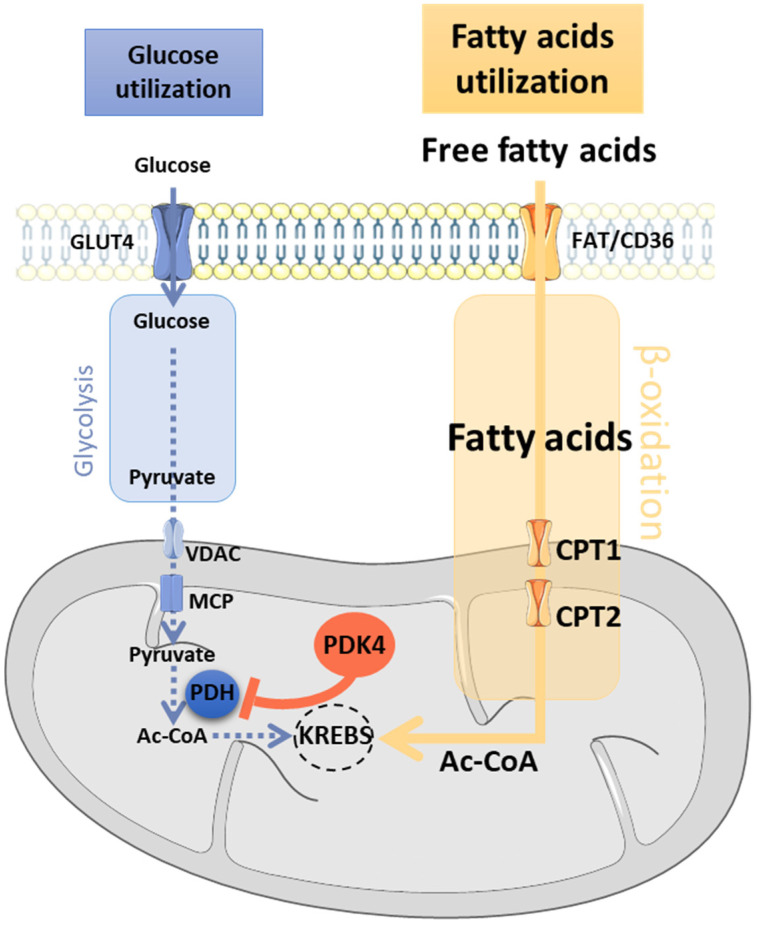Figure 2.
Altered energy metabolism in ALS skeletal muscle. In skeletal muscle, glucose enters into the cell through the GLUT4 transporter. It is then either stored as glycogen (not shown) or phosphorylated to give rise to pyruvate, the final product of glycolysis. Once formed, pyruvate enters into the mitochondria through a series of specific carriers (outer membrane: VDAC, inner membrane: MPC). In the mitochondria, pyruvate is oxidized into acetyl-CoA by PDH before entering the Krebs cycle to produce energy. Fatty acids enter the cell via FAT/CD36 transporters and get into the mitochondrial matrix thanks to CPT1 where β-oxidation will begin and produce acetyl-CoA which produces energy once in the Krebs cycle. In ALS, the oxidative pathway is greatly enhanced while the glycolytic pathway is reduced by abnormal induction of PDK4 in skeletal muscle which inactivates PDH by phosphorylation. PDK4 is believed to be at the root of this energy imbalance. Ac-CoA: acetyl-coenzyme A; CPT1: carnitine palmitoyltransferase 1; FAT/CD36: fatty acid translocase/cluster of differentiation 36; GLUT4: Glucose transporter type 4; MPC: mitochondria pyruvate carrier, PDH: pyruvate deshydrogenase; PDK4: pyruvate deshydrogenase kinase 4; VDAC: voltage-gated anionic channel.

